Former Kusakaru Electric Railway Kita-Karuizawa Station
Currently, the Karuizawa Museum History and Culture is hosting an exhibition titled “The Kusakaru Electric Railway run through across the highlands.”
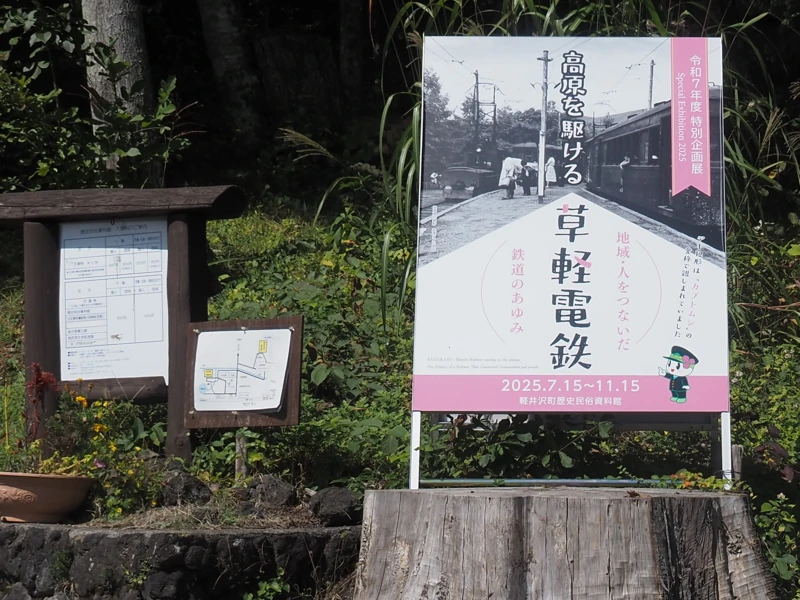
The Kusakaru Electric Railway connected Karuizawa in Nagano Prefecture with Kusatsu Onsen in Gunma Prefecture. Its lines opened sequentially from 1914 to 1926.
Its origins trace back to the “Kusatsu Kogyo Co., Ltd.” founded in 1908 by volunteers from Kusatsu Town, who planned to lay light gauge tracks from Kutsukake in Karuizawa to Kusatsu Town. (The starting point was later changed.)
In 1912, the company name was changed to Kusatsu Light Railway Co., Ltd. Construction began the following year, starting near the JNR Karuizawa Station. The starting point was named “Shin-Karuizawa.”
In 1915, the 9.95 km section between Shin-Karuizawa and Kose Onsen opened, with steam locomotive service commencing in July.
The line was extended further, with the Kose Onsen to Agatsuma section opening in 1917 and the Agatsuma to Tsumagoi section opening in 1918.
The company became a subsidiary of the Agatsuma-gawa Electric Power Company in 1923 and changed its name to Kusatsu Electric Railway Co., Ltd. in February of the following year. In November of the same year, the 36.8 km section between Shin-Karuizawa and Tsumagoi was electrified.
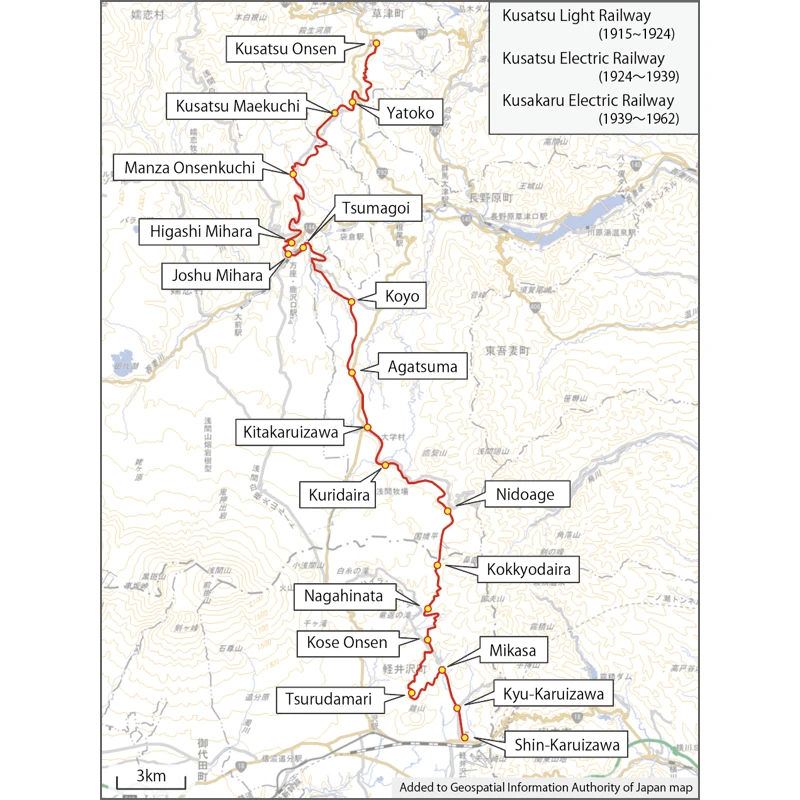
The line reached Kusatsu Onsen Station in 1926.
Station names on the map reflect the names used before the line’s closure. There were also periods when other temporary stations existed.
In 1933, the company began operating bus services. In 1939, the company name was changed to Kusakaru Electric Railway Co., Ltd.
In April 1945, it became part of the Tokyo-Kyuko Corporation group. However, a typhoon in 1949 caused track collapses in multiple locations. Consequently, a shareholders’ meeting decided to discontinue the Shin-Karuizawa to Joshu-Mihara section.
In response, the labor union and residents along the line launched a campaign to save the railway.
I was unable to trace the movement’s fate, but in 1959, typhoon damage again disrupted service between Tsumagoi and Joshu-Mihara, switching operations to bus transport. Ultimately, the railway was never restored, and the following year, the line between Shin-Karuizawa and Joshu-Mihara was abolished.
Finally, in January 1962, the section between Joshu-Mihara and Kusatsu Onsen was also discontinued, marking the complete abandonment of the entire line.
Track removal work was carried out, and it is said that removal was completed by May.
Until here is an introduction.
It has been over 60 years since the Kusakaru Electric Railway ceased operations, yet one station building still remains today. It is the former Kita-Karuizawa Station in Gunma Prefecture.
This time, I decided to visit that old station building.
I drove north on National Route 146 from Naka-Karuizawa. After crossing the prefectural border into Gunma Prefecture and driving about 5 km, I arrived here.
The former Kita-Karuizawa Station building as seen from the road. This is the platform side, with part of the track still visible in the center.
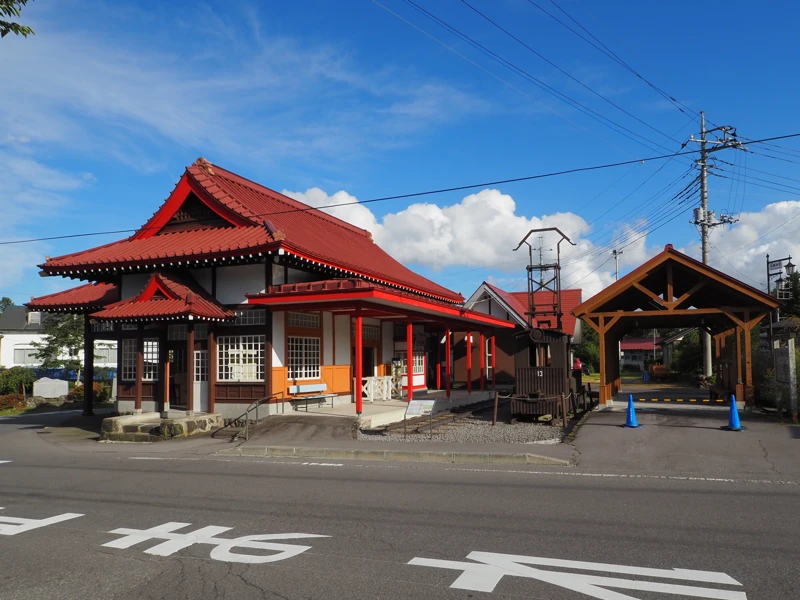
On display is a wooden locomotive model.
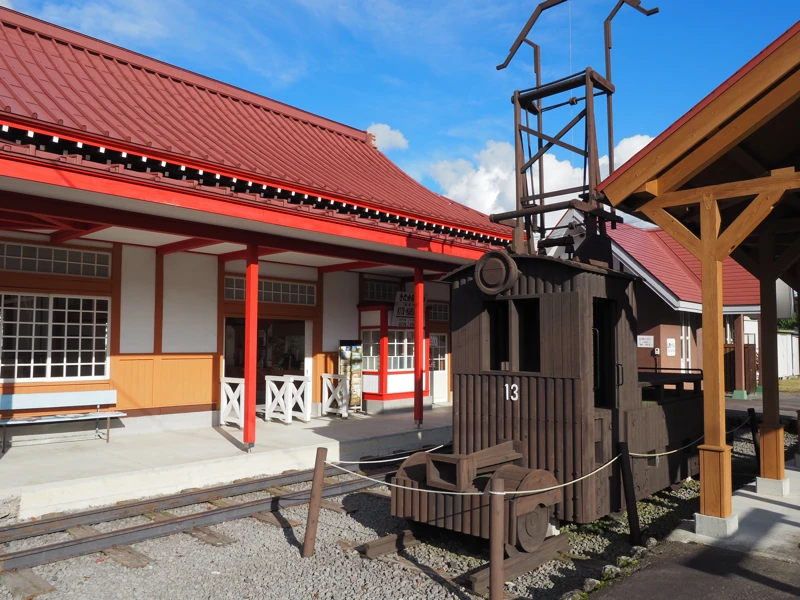
The station opened in 1918 and was originally named Jizogawa Station.
Later, in 1928, the resort area “Hosei University Village” was developed around the station. The president of Hosei University sold vacation homes in this area to faculty, staff, and associates. Then the area began to be called Kita-Karuizawa.
In 1929, the University Village built a new station building and donated it to the railway company. The station name was also changed to Kita-Karuizawa Station.
This is the front of the station building. You can see a row of white H-shaped patterns; these represent the H in “Hosei University”
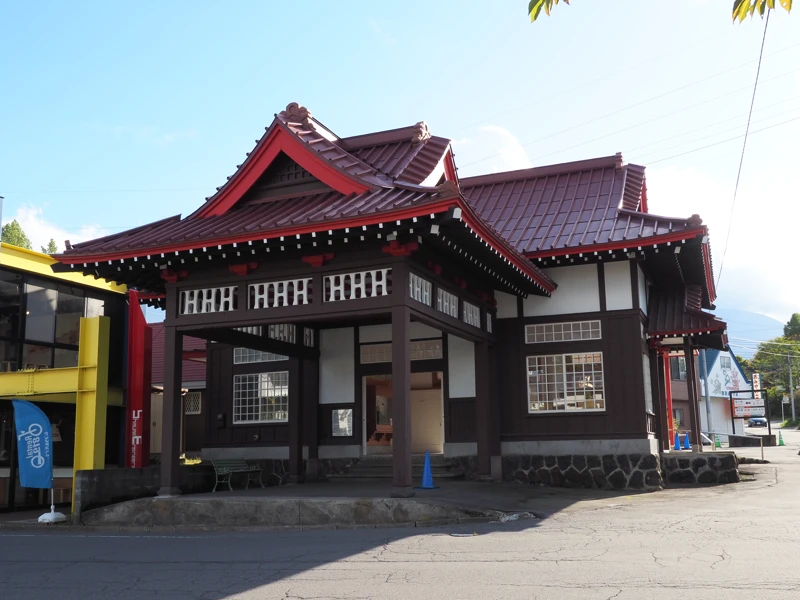
Inside the station building. It has been renovated and is now clean.
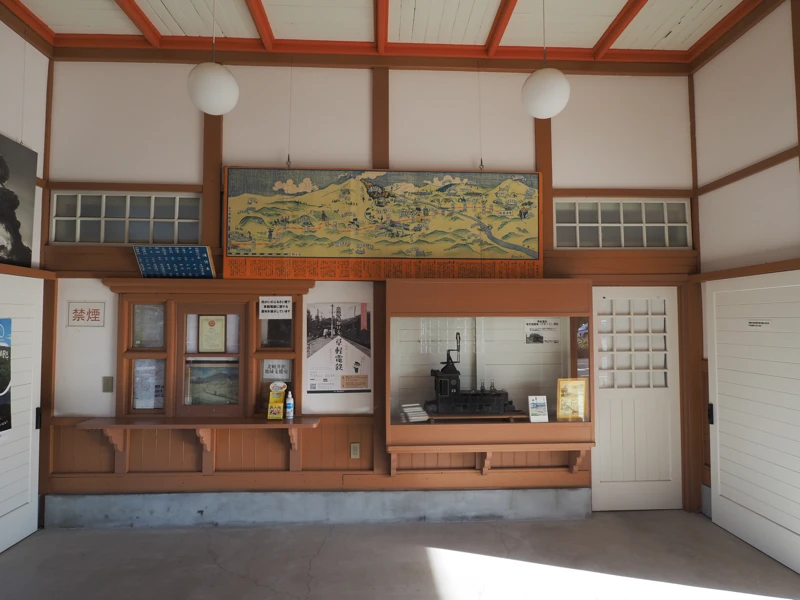
In 1960, the railway between Shin-Karuizawa and Joshu-Mihara was officially discontinued, so the station building also ceased its function.
Afterwards, it was used for a long time as a bus office and warehouse for Kusakaru Kotsu. It seems there was even a period in the 1990s when it was a coffee shop and snack bar. The interior was apparently remodeled multiple times to suit its various uses.
In 2006, Naganohara Town carried out renovation work to preserve the station building, aiming to convey the history of the Kusakaru Electric Railway and Kita-Karuizawa. The station building was registered as a National Tangible Cultural Property the following year.
This is the exit to the platform.
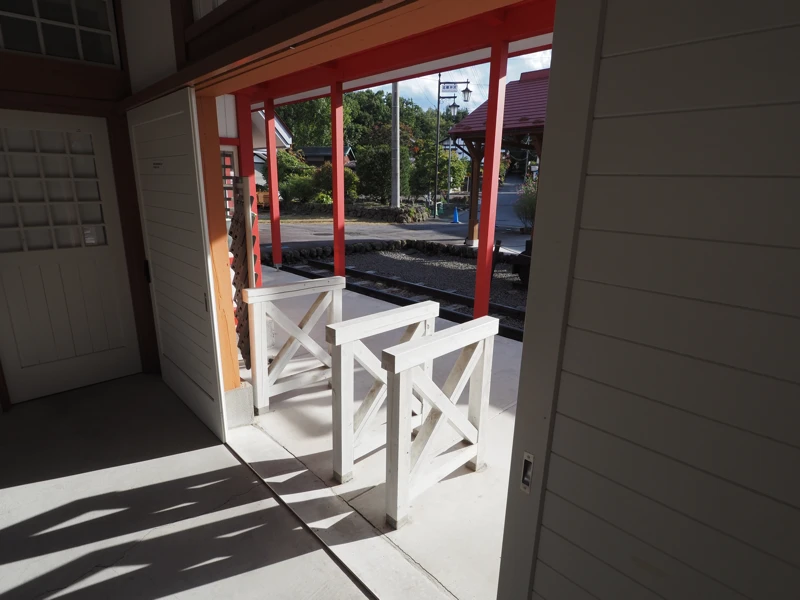
The view from the platform side. Was the height difference between the tracks and the platform really only this much?
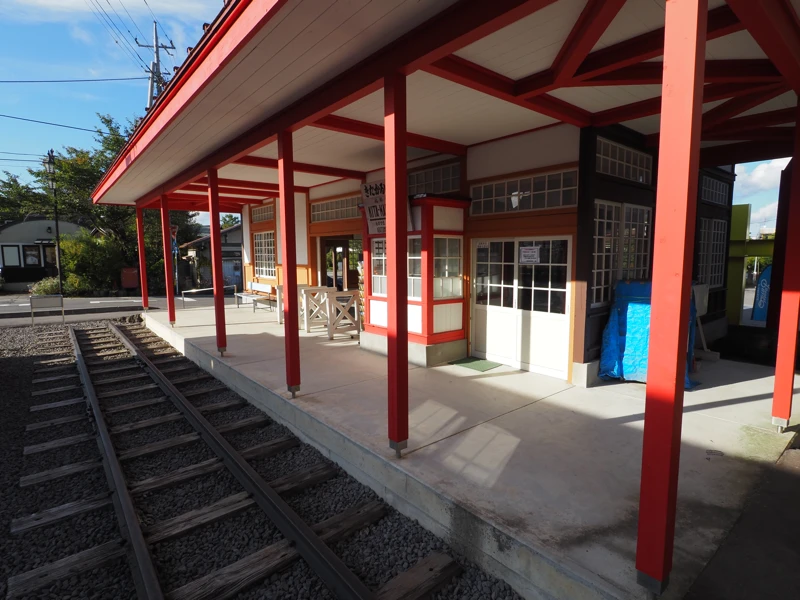
According to the information board, the Kusakaru Electric Railway was used by local residents and tourists, but it wasn’t just for people – it was also used to transport sulfur mined from the nearby mines.
The side of the station building as seen from the northwest.
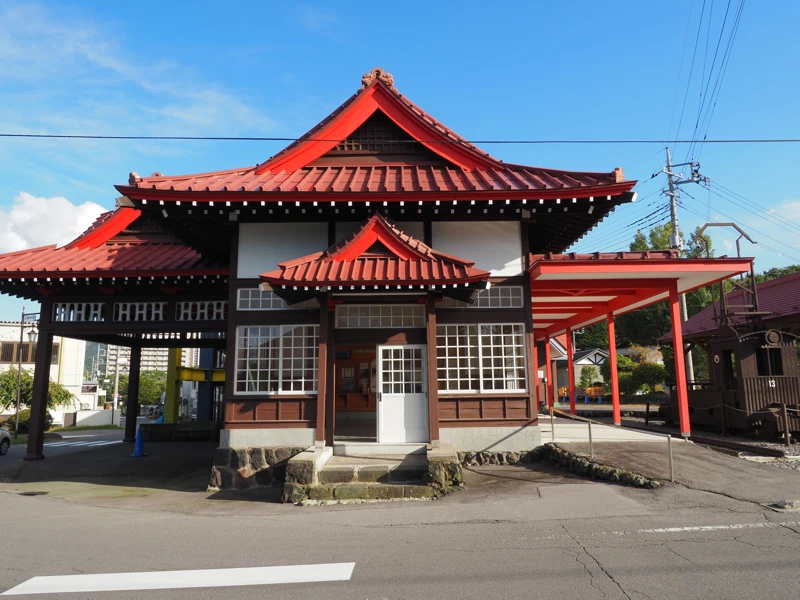
It wasn’t open when I visited, but the station building had a sign reading “Kitakaruizawa Regional Support Office,” so I imagine it also serves as a community center. It seems it can also be used as an exhibition gallery for artworks.
The last photo returns to Nagano Prefecture.
An electric locomotive from the Kusakaru Electric Railway is displayed in front of Shinano Railway’s Karuizawa Station.
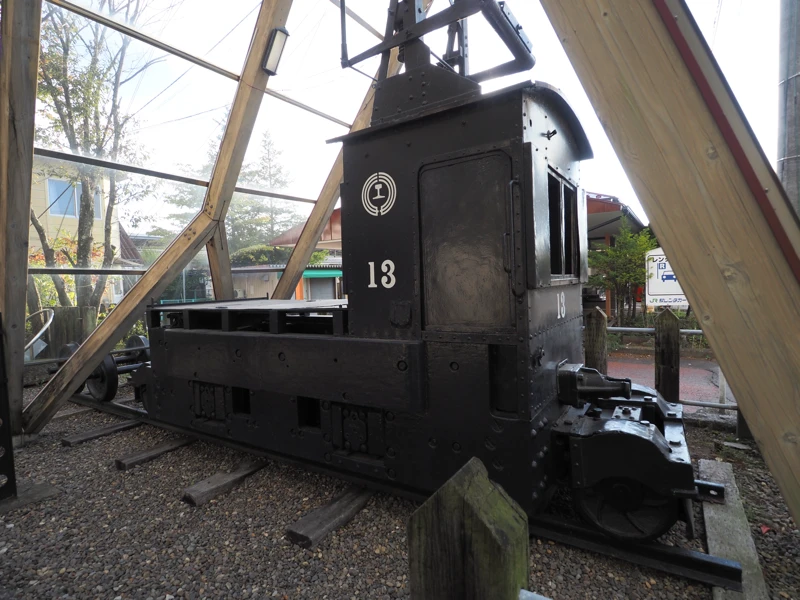
There’s an explanatory board, so I’ll transcribe it.
“Kusakaru Electric Railway Electric Locomotive (Deki 12 Type)
This locomotive, known as the Deki 12 type, was manufactured in 1920 by the American company Jeffrey. It was converted from a mining trolley equipped with a hand brake for normal use and an emergency electric brake.
It began operations as the Kusatsu Light Railway in July 1915. By 1926, electrification was completed between Karuizawa and Kusatsu (55.5 km).
For about 35 years until the line’s closure on January 31, 1962, this electric locomotive served as a beloved means of transportation for locals and a reliable guide for travelers and summer vacationers.
Characterized by its long pantograph and L-shaped body, it was affectionately nicknamed the ‘Kabutomushi (Beetle)’.
The pair of wheels on the south side are from a passenger car once pulled by this locomotive.
Karuizawa Town Board of Education"
The exhibition at the Karuizawa Museum History and Culture runs until November 15th.
[Reference]
“The Kusakaru Electric Railway run through across the highlands.” (Karuizawa Museum of History and Culture Exhibition / Dates: July 15 to November 15, 2025)
“Comprehensive Survey Report on Gunma Prefecture’s Modernization Heritage” (Compiled by the Cultural Properties Protection Division, Gunma Prefectural Board of Education / Gunma Prefectural Board of Education / 1992)
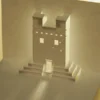
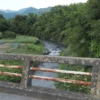



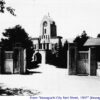
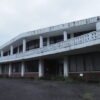
Discussion
New Comments
No comments yet. Be the first one!